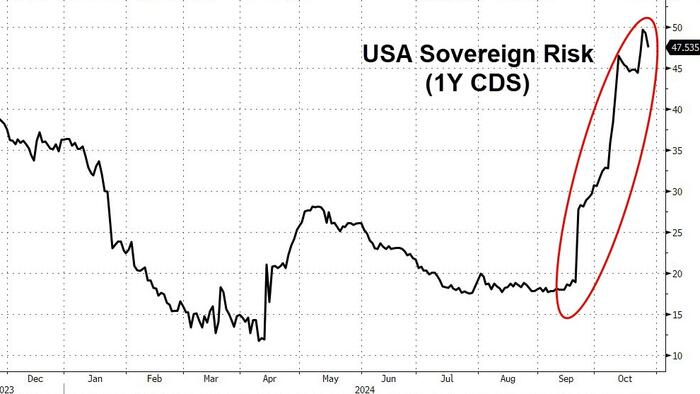The current landscape for bonds, particularly U.S. Treasury securities, is undergoing a significant transformation, as highlighted by Nomura Managing Director Charlie McElligott. He refers to this phase as a “crucible moment,” which suggests a critical testing or refining period for the bonds market. Over the coming days and weeks, various pivotal events are set to unfold, including substantial new bond issuances ranging from $70 billion in 5-year notes to $69 billion in 2-year notes and $44 billion in 7-year notes. Furthermore, crucial economic indicators and data releases, such as the U.S. JOLTS report, the Treasury’s refunding announcement, and the personal consumption expenditures (PCE) index, are expected to provide key insights into the health of the economy. In addition, the upcoming Non-Farm Payroll (NFP) report, U.S. Presidential Election Day, and the November Federal Open Market Committee (FOMC) meeting will add layers of complexity and influence to the bonds market.
The dynamics contributing to the current state of U.S. Treasuries involve a multi-week rebuilding of term premiums, which can be understood through the lens of ongoing structural fiscal challenges facing the United States government. Years of massive deficit spending have significantly influenced market perceptions and realities. These deficits not only fulfill funding needs but also contribute to higher nominal GDP figures. This factor, coupled with persistently high inflation levels that continue to exceed the Federal Reserve’s targets, has shaped the mindset of market participants and policymakers alike. The prevailing opinion among some analysts is that the Fed has shifted its focus away from controlling inflation, deeming it a lesser evil, especially when juxtaposed against the imperatives of maintaining employment and stabilizing economic growth.
Investors are therefore positioning themselves in anticipation of how these upcoming events will affect yield curves and risk premiums. Given the backdrop of high levels of issuance, there is considerable uncertainty surrounding how the market will digest this new supply. The balance of supply and demand dynamics will be critically tested, especially in relation to investor appetite amid shifting economic signals. If market participants respond negatively to the upcoming data releases or the elevated levels of new debt, yields could rise further, creating a challenging environment for bondholders. Conversely, if the issuance is received well within the context of solid economic performance indicators, it may help stabilize or even lower yields, presenting a more favorable scenario for investors.
In addition to these domestic factors, global developments can further complicate the situation. Central banks worldwide are also grappling with inflationary pressures and varying degrees of economic recovery from the pandemic. As global financial markets remain interconnected, shifts in monetary policy abroad, such as rate hikes or easing measures from other central banks, can have repercussions for U.S. Treasury yields. Therefore, investors must not only monitor domestic economic data closely but also consider international influences which can affect investor sentiment and bond flows. The inherent interconnectedness of global financial systems implies that changes in foreign markets can directly impact U.S. bonds, binding the fate of the domestic market to global economic trends.
Moreover, the essence of political events, such as the U.S. Presidential Election Day, also looms large over the bond market. Elections often introduce volatility into financial markets as new policies and governance approaches can reshape economic expectations. Candidates’ stances on fiscal policy, government spending, and regulatory environments can stretch across different sectors, potentially leading to significant movements in bond markets depending on perceived economic implications. Thus, November’s election may serve as a watershed moment for bonds, depending on the electoral outcomes and ensuing governmental strategies articulated by the winning party.
Lastly, all of these variables are set against the fundamental principles of bond investing, which typically implies a trade-off between risk and return. Investors in the current environment are cautioned to navigate this landscape carefully as they assess their strategies in light of an evolving macroeconomic backdrop characterized by inflation, fiscal stimulus, and electoral uncertainty. The decisions made in the coming weeks regarding new issuances and economic signals could ultimately define the trajectory of the bond market over the coming months and years, making it essential for stakeholders to stay vigilant and adaptive to the tumultuous adjustments. In essence, the bonds market is at a pivotal crossroads, where short-term strategies must align with an understanding of the deeper economic currents shaping the investment environment.

